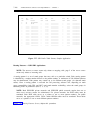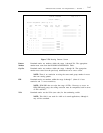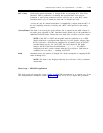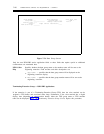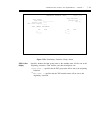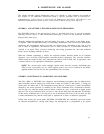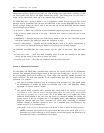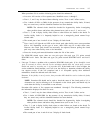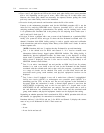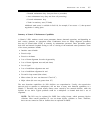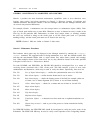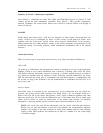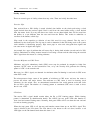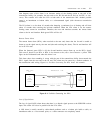
8-2
MAINTENANCE AND ALARMS
maintenance activities. Digital circuit packs are able to detect and report errors occurring on both
the circuit pack itself and on the digital transmission facility. The circuit packs are also able to
restore service automatically when and if any detected faults should clear.
For ISDN-PRI, layer-3 protocol defines a set of maintenance related service messages. The service
messages may be transmitted from the near end ISDN-PRI to the far end ISDN-PRI and vice versa.
Service messages change the service state of the near end and far end ISDN-PRI. The four primary
service messages are as follows:
●
●
●
●
In Service — Places into service one or more B-channels that have previously been busied-out.
Out of Service (either near end or far end) — Removes from service or busies-out one or more
B-channels.
Maintenance — Specifies that one end of the facility intends to send test calls toward the opposite
end of the interface. This effectively blocks the origination of calls.
Service Acknowledge — Specifies that the current function (such as in service, maintenance, or
out of service) for which the facility or channel was previously used is being changed.
For DS1/DMI, and ISDN-PRIs, the switch software logs two types of fault codes. They are known
as:
●
●
Facility fault codes — those that show something about an event that occurred on the digital
facility and the action (if any) taken to restore the facility.
Interface fault codes — those that say something about the circuit pack itself.
Generic 2 Maintenance Procedures
For DS1/DMI, and ISDN-PRIs, procedure 600 should be the starting point for all maintenance
activities. This procedure displays logged alarms in unit type (such as unit type = 63, 68, 75, or 76),
the corresponding circuit pack location, any alarm status, and optionally another procedure for
further reference. The next step depends on the identified unit type and which procedure was
referenced. For example:
a.
b.
Unit type 63 (external equipment) may be investigated with procedure 618. This would permit
the determination of whether the alarms are associated with a DS1, with ISDN-PRI external
equipment, or external stratum-3 alarms.
Unit type 68 shows a problem with a particular DS1 circuit pack. If the identified circuit pack
is currently in service, then the service technician should check the circuit pack’s current health
and status by executing test 1 of procedure 625. If the health code is 4 or higher, the service
technician should attempt a test call (over the facility) to determine whether the facility can
support service. If the call completes and is of acceptable quality, then additional maintenance
should be deferred until after hours. Procedure 625 allows status monitoring of DS1/DMI
facilities, clearing of misframe counters in test 1 on a per-board basis, and clearing of slip
counters in test 2 on a systemwide basis.
If the facility is out of service, then procedure 620 should be used to isolate the faulty hardware.
NOTE: Procedure 620 should not be used to check the status of the circuit pack as it is a
destructive test (service affecting to all 24 channels on the circuit pack) and should only be
used when the facility is unavailable or out of hours.



